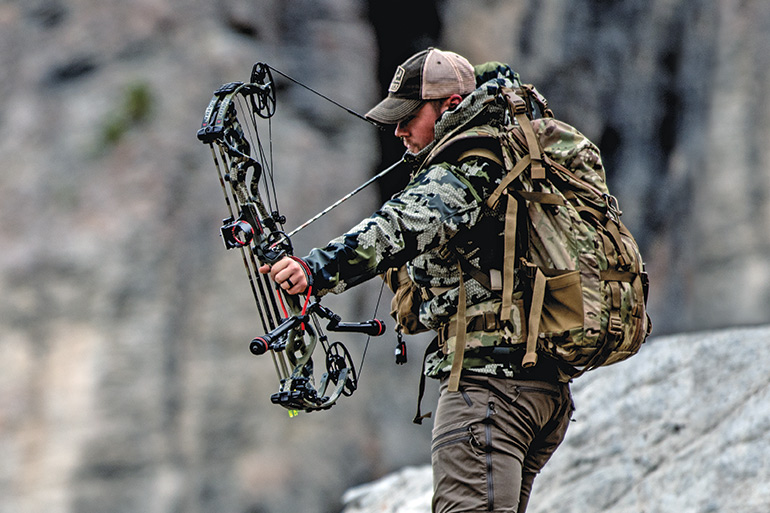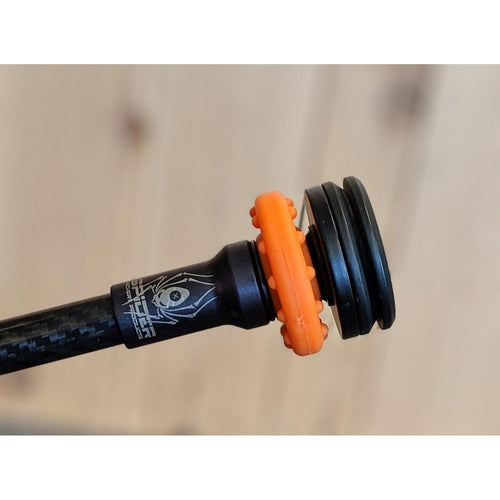Improve Your Accuracy: The Function of Archery Stabilizers
Improve Your Accuracy: The Function of Archery Stabilizers
Blog Article
Master the Art of Archery: Recognizing the Relevance of a Stabilizer in Your Configuration
Whether one is a seasoned archer or just beginning their trip, the importance of a stabilizer in their configuration can not be overstated. By comprehending the benefits of utilizing a stabilizer, considering the best variables when choosing one, and appropriately mounting and readjusting it, archers can raise their skills to brand-new elevations.
The Duty of a Stabilizer in Archery
A stabilizer plays an essential duty in archery by improving balance and reducing vibrations during the shot. A stabilizer aids to counteract these vibrations by absorbing and dissipating the energy (archery stabilizer).
One of the primary benefits of a stabilizer is its ability to boost equilibrium. The weight of the stabilizer aids to distribute the weight uniformly, lowering the strain on the archer's arm and improving stability.
In enhancement to balance, a stabilizer also helps to reduce torque. When an archer releases the bowstring, there is an all-natural tendency for the bow to turn in the hand. This rotation, referred to as torque, can cause the arrowhead to veer off-course. The weight and design of a stabilizer neutralize this turning, guaranteeing a much more accurate and consistent shot.
Benefits of Making Use Of a Stabilizer
The application of a stabilizer in archery provides various advantages that boost an archer's performance and overall shooting experience. Firstly, a stabilizer aids to minimize the vibrations produced upon release of the arrowhead. These vibrations can cause the bow to torque or spin, leading to incorrect shots. By soaking up and wetting these resonances, the stabilizer boosts the security of the bow, permitting even more constant and exact shots.
Secondly, a stabilizer assists to balance the bow by including weight to the front end. This weight distribution counteracts the natural tendency of the bow to tip ahead upon launch, reducing the quantity of movement and boosting the archer's ability to maintain objective on target.

Last but not least, a stabilizer can likewise function as a shock absorber, minimizing the shock and recoil experienced upon release. This not only boosts the convenience of capturing but additionally decreases the danger of injury or pressure on the archer's body.
Exactly How a Stabilizer Boosts Precision
Enhancing the precision of an archer's shots, a stabilizer plays a critical function in boosting general efficiency. archery stabilizer. By including stability to the bow, a stabilizer aids minimize the undesirable motion and vibration that can take place throughout a shot. This decrease in activity enables the archer to maintain a steady purpose, causing even more precise and constant shots

Additionally, a stabilizer aids to dampen resonances that take place upon release. These vibrations can create the acquiesce drink, affecting the arrowhead's trajectory and accuracy. By soaking up and dissipating these vibrations, a stabilizer aids to maintain the bow's security and guarantee a smooth and exact shot.
Moreover, a stabilizer can likewise help in stabilizing the weight circulation of the bow (archery stabilizer). By including weight to the front of the bow, a stabilizer aids to stabilize the weight of devices, such as views or quivers, which might be affixed to the bow. This balanced weight distribution assists the archer preserve a constant and regulated shooting setting, bring about improved accuracy
Aspects to Consider When Choosing a Stabilizer
When selecting a stabilizer for your bow, it is very important to think about numerous variables that will certainly add to its total effectiveness and suitability for your individual capturing design. The very first variable to think about is the length of the stabilizer. Stabilizers come in various sizes, ranging from brief to long. Longer stabilizers generally provide a lot more stability and equilibrium, but they can likewise be much heavier and harder to maneuver. Shorter stabilizers, on the other hand, supply better ability to move but may give up some security.
One more factor to think about is the weight of the stabilizer. The weight of the stabilizer can impact the balance of your bow. A larger stabilizer can assist to improve and minimize vibrations security, resulting in a steadier shot. A lighter stabilizer may be favored by shooters who focus on maneuverability and rate.
Some stabilizers have adjustable functions, such as adjustable length or adjustable weights, which enable you to customize the stabilizer to your certain requirements. Carbon fiber stabilizers are long lasting and lightweight, while aluminum stabilizers use a balance between weight and rigidness.
Various stabilizers may work better for particular shooting designs, such as target capturing or searching. It is suggested to seek advice from with seasoned archers or specialists to establish which stabilizer will best match your specific requirements.
Tips for Properly Setting Up and Changing a Stabilizer
Longer stabilizers provide even more stability yet can be much less manoeuvrable, while much shorter stabilizers use increased maneuverability but might sacrifice stability. As soon as you have actually chosen the appropriate length, attach the stabilizer to the bow using the provided placing equipment. Guarantee that the stabilizer is safely attached and straightened with the bow's riser.
After check here installing the stabilizer, it is needed to make changes to accomplish the desired balance and shot uniformity. Start by adjusting the weight distribution along the stabilizer. This can be done by adding or getting rid of weights from the stabilizer's weight system. Try out different weight arrangements to locate the equilibrium that works finest for you. Furthermore, think about adjusting the angle of the stabilizer to fine-tune the shot. A small onward or visit site backwards tilt can affect the bow's equilibrium and exactly how it responds during the shot.

Conclusion
In final thought, a stabilizer plays a critical function in archery by enhancing precision and reducing bow torque. When choosing a stabilizer, factors such as product, weight, and size should be considered to meet specific needs.
Additionally, a stabilizer can also assist in balancing the weight circulation of the bow. By adding weight to the front of the bow, a stabilizer aids to balance the weight of devices, such as sights or quivers, which might be connected to the bow. Some stabilizers have adjustable attributes, such as adjustable size or flexible weights, which allow you to personalize the stabilizer to your particular demands. Carbon fiber stabilizers are lightweight and sturdy, while light weight aluminum stabilizers use an equilibrium in between weight and strength.
Longer stabilizers supply more stability yet can be much less maneuverable, while shorter her explanation stabilizers supply raised ability to move yet might compromise stability.
Report this page